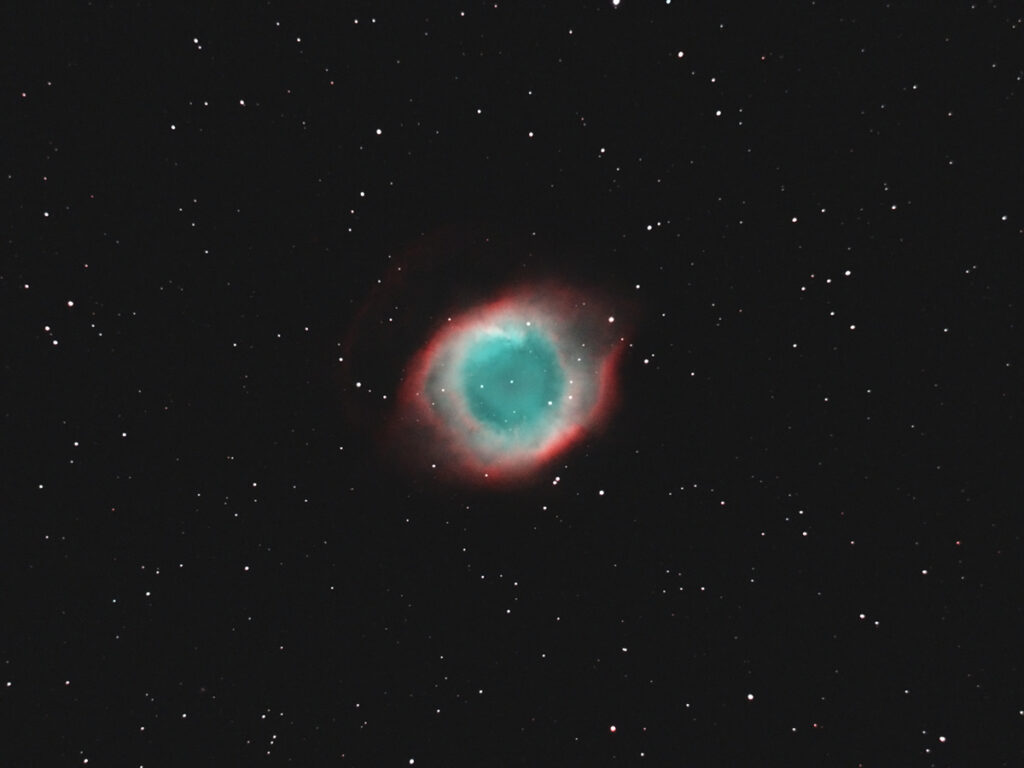
Telescope: Meade SN10 at f/4, Orion Atlas EQ-G
Camera: QHY 268c, Mode 0, Gain 30, Offset 30, -10C
Filter: 2” Radian Triad Ultra Hb, OIII, Ha, SII filter
Guide scope: Williams Optics 50mm, ASI290MM mini, PHD
Exposure: 19x300sec, saved as RAW16/FITS
Darks: 32×300 sec
Flats: 64×2 sec, tee shirt flats taken at dusk
Average Light Pollution: Red zone, fair transparency
Lensed Sky Quality Meter: 18.3 mag/arc-sec^2
Stacking: Mean with a 1-sigma clip.
White Balance: Nebulosity Automatic
Software: SharpCap Pro, Nebulosity, Deep Sky Stacker, Photoshop
NGC 7293 is one of those wonderful objects that hides in plain sight. It is so large (about half the size of the full moon) that its light is spread out over a large area, making it very difficult to see and all but invisible from my red-zone backyard. This is a good example of how a modern multiband narrowband filter can punch through challenging sky conditions. The Helix appears so large as it is one of the closest planetary nebula with a distant of only 650 light years. It spans a diameter of about 2.5 light years and is relatively young with an age estimated to be about 10,600 years.
NGC 7293 is currently rising in the southwest at dusk.
Recent Comments